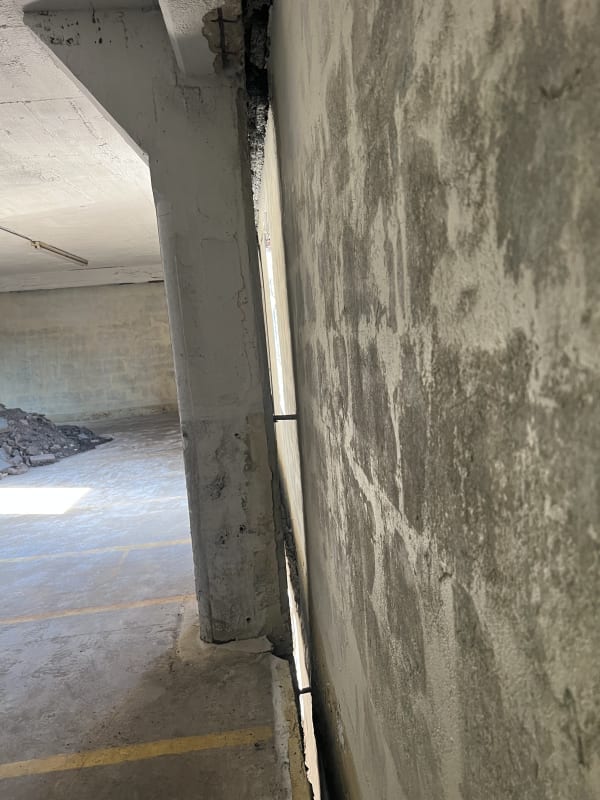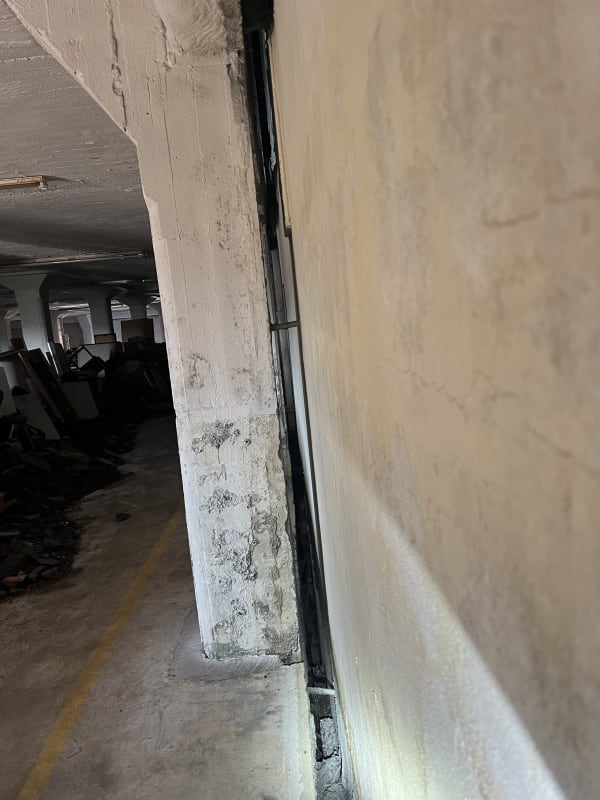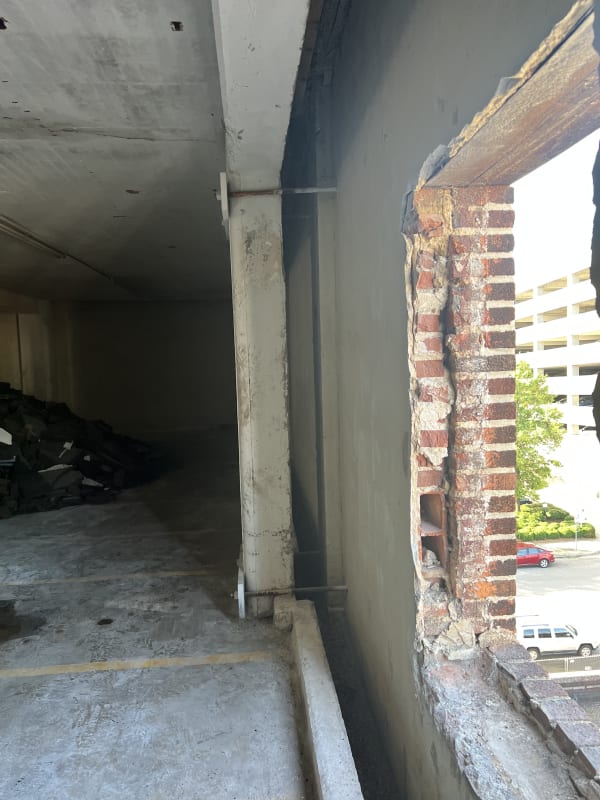I'm working on a 100+ year old building that was originally built as an ice house. It consists of 7 stories of heavy reinforced concrete frame (very heavy – presumably to support ice). The façade is 2-wythe brick that goes all the way up. There is a large offset (several inches) between the concrete frame and the brick for cork and fart-rock insulation. The brick is tied back to the frame at large spacings (one to two per story) with what appears to be a steel pipe that is embedded at both ends. The ties are roughly spaced 16'-20' horizontally (at the columns) and 6'-10' vertically. I'm trying to understand the makeup of the brick façade and tie system. The robust tie makes me suspect that it is attached to some sort of internal reinforcing in the brick. Does anyone have any details, information, or experience with this sort of system that they will share? Thanks.
Navigation
Install the app
How to install the app on iOS
Follow along with the video below to see how to install our site as a web app on your home screen.
Note: This feature may not be available in some browsers.
More options
Style variation
-
Congratulations cowski on being selected by the Eng-Tips community for having the most helpful posts in the forums last week. Way to Go!
You are using an out of date browser. It may not display this or other websites correctly.
You should upgrade or use an alternative browser.
You should upgrade or use an alternative browser.
Historic Cold Storage Masonry Details
- Thread starter jorton
- Start date
- Status
- Not open for further replies.
I've gotta see some pictures of this. Deformed rebar didn't really become a thing until the 1920s, so this may have plain bars or be a very early example of "modern" reinforced concrete.
As for the facade, I doubt there's any reinforcing. There may be a plate on the end to line up with the collar joint and nothing else. Remember, it wouldn't have been long before this that double wythe brick would have been the entire wall system for a 2 or even 3 story building (though the first floor of a 3-story would likely have a 3rd wythe).
Also, what's "fart-rock" insulation?
As for the facade, I doubt there's any reinforcing. There may be a plate on the end to line up with the collar joint and nothing else. Remember, it wouldn't have been long before this that double wythe brick would have been the entire wall system for a 2 or even 3 story building (though the first floor of a 3-story would likely have a 3rd wythe).
Also, what's "fart-rock" insulation?
- Thread starter
- #3
It's tough to show helpful pictures. The outside looks like a 7 story brick building with windows on some sides. The inside is flat slab concrete frame with bay spacings varying between 16' and 20'. The picture below is of the tie in an area where the cork and fart-rock had been removed and replaced by spray-in foam. The concrete column is on the left and the brick is on the right. I'm still trying to wrap my head around 7 stories of unreinforced two-wythe...
"Fart-rock" is a new term to me, but it fits. It is a foam glass insulation similar to blocks of pumice.

"Fart-rock" is a new term to me, but it fits. It is a foam glass insulation similar to blocks of pumice.

Well, if you're at 70ft tall and a wall unit weight of about 80psf, that's a 5.6k/ft load at the base. Each foot is going to be about 8*12=96in2. That's 58.33psi. That's a little over 1/10 of the mean unit compressive strength published in Table 1 of Brick Technical Note 3a for Molded, Solid Clay Brick. Mortar, even old lime mortar, still has a compressive strength well above 58psi.
Throw in those interesting ties (how have they not corroded away!?) for stability, and you're good to go, I guess.
Throw in those interesting ties (how have they not corroded away!?) for stability, and you're good to go, I guess.
- Thread starter
- #6
I appreciate your comments. Below are a few better pictures. It appears that the ties were not installed at all of the intended column locations, and heavy steel retrofits were used instead. The brick is finished on the interior at this particular floor. The pattern on the parge is where the foam glass insulation was placed (which may have been a later modification). There are three wythes of brick visible at the window, but only the outer two are joined. This might be some sort of cavity wall system. I thought it was most two-wythe based on some other openings, but the details vary throughout the building. We're still exploring. I can't imagine these are not attached to some sort of hidden steel grillage or lentil. Is anyone familiar with any internal masonry reinforcing systems being used in the teens?






- Status
- Not open for further replies.
Similar threads
- Locked
- Question
- Replies
- 3
- Views
- 1K
- Replies
- 3
- Views
- 533
- Locked
- Question
- Replies
- 8
- Views
- 723
- Locked
- Question
- Replies
- 6
- Views
- 497
- Replies
- 4
- Views
- 2K
